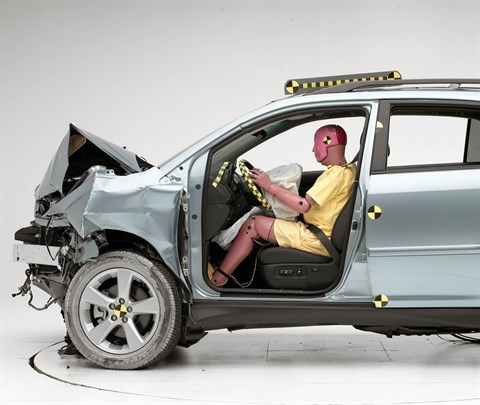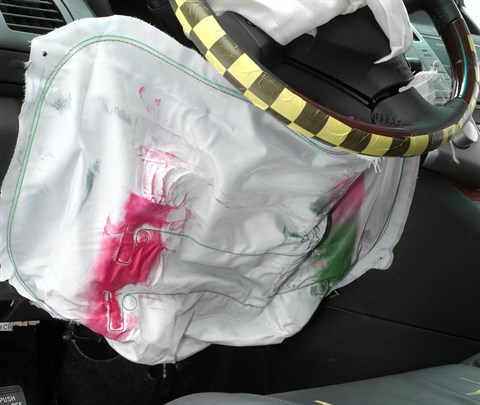Moderate overlap front: original test
Rating applies to 2004-09 models
Tested vehicle: 2004 Lexus RX 330 4-door 4wd
The Lexus RX 330 was introduced in the 2004 model year as a replacement for the Lexus RX 300.
A hybrid-electric version of the RX, known as the RX 400h, was introduced in the 2006 model year. The RX 330 was renamed the RX 350 beginning with 2007 models because a new gasoline engine was installed.
| Evaluation criteria | Rating |
|---|---|
| Overall evaluation | |
| Structure and safety cage | |
| Driver injury measures | |
| Head/neck | |
| Chest | |
| Leg/foot, left | |
| Leg/foot, right | |
| Driver restraints and dummy kinematics | |

Action shot taken during the frontal offset crash test.

The dummy's position in relation to the steering wheel and instrument panel after the crash test indicates that the driver's survival space was maintained very well.

Smeared greasepaint indicates where the dummy's head slid along the roof rail and grab handle during rebound. Head acceleration from this hit was low.

The RX features an airbag that deploys from the knee bolster underneath the steering column. The dummy's knees and shins hit this airbag as indicated by greasepaint.
Head restraints & seats
Seat type: All seats
| Overall evaluation | |
|---|---|
| Dynamic rating | |
| Seat/head restraint geometry |
About the head restraint & seat test
Currently, IIHS tests apply only to front seats.
